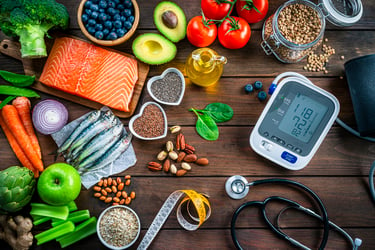eStoreRx™
Online Supplement Dispensary
eStoreRx™ is an easy direct-to-patient ordering & fulfilment program for lifelong wellness.
For over 40 years, Biotics Research Corporation has revolutionized the nutritional supplement industry by utilizing “The Best of Science and Nature”. Combining nature’s principles with scientific ingenuity, our products magnify the nutritional
eStoreRx™ is an easy direct-to-patient ordering & fulfilment program for lifelong wellness.
Biotics Research is proud to expand our commitment to education with the Wellness Unfiltered Pro Podcast. Each episode delves into key health topics and the clinical applications of our premier products. Through candid, insightful conversations, our team offers practical guidance to keep you informed and empowered as a healthcare professional.
December 18 2025
Low-carbohydrate diets are perhaps most popular for weight loss, but the strictest form of carbohydrate restriction – a ketogenic diet – has been show...
 A dose-response meta-analysis of randomized controlled trials on omega-3 polyunsaturated fatty acids (PUFAs) and blood pressure (BP) has shown that specific doses of around 3 grams are optimal for lowering blood pressure in the general population.
A dose-response meta-analysis of randomized controlled trials on omega-3 polyunsaturated fatty acids (PUFAs) and blood pressure (BP) has shown that specific doses of around 3 grams are optimal for lowering blood pressure in the general population.
While scientific evidence has shown that consuming omega-3 fatty acids in food or dietary supplements may help reduce the risk of high blood pressure, the optimal quantities of the omega-3 fatty acids docosahexaenoic acid (DHA) and eicosapentaenoic acid (EPA) have never been established. In addition, the strength and shape of the dose-response correlation still need to be determined. For example, the Japan Eicosapentaenoic Acid Lipid Intervention Study linked EPA intake with a lower risk of major vascular events. However, previous meta-analyses looking at the connection between omega-3 PUFA intake and blood pressure could not identify a significant dose-response relationship, or showed conflicting trends. This may have been because they used pool meta-regression or grouped categories of exposure into separate meta-analyses, which means they didn’t examine the correlations among effects at different dose levels.
This study, conversely, aimed to more precisely determine the dose-response effect of either DHA, EPA, or both on BP in the general population, as well as relevant subgroups. Researchers analyzed the results of 71 clinical trials from around the world published between 1987 and 2020 examining the relationship between BP and DHA and EPA in almost 5,000 individuals aged 22 to 86 years. The study participants either had or did not have high blood pressure or a cholesterol disorder, and took dietary and/or prescription omega-3 dietary supplements for an average of 10 weeks.
The analysis found that:
Limitations of this review include variation in how blood pressure was measured in the research analyzed, and whether the source of omega-3s came from supplements or food. However, this study supports the FDA guidance that EPA and DHA omega-3 PUFAs may help reduce the risk of coronary heart disease by lowering high BP, particularly among those who have already been diagnosed with hypertension.
Submit this form and you'll receive our latest news and updates.
Results of a double-blind randomized and placebo-controlled trial evaluating the use of omega-3 fatty acid supplementati...
Learn moreA report on the intake of fish and omega-3 fatty acids among pregnant women in the U.S. was recently published in Public...
Learn moreA meta-analysis describing the dosing relationship between omega-3 fatty acid supplementation and blood pressure was rec...
Learn more
*These statements have not been evaluated by the Food and Drug Administration. This product has not intended to diagnose, treat, cure, or prevent any disease.
Proposition 65 Warning
© 2025 Biotics Research Corporation - All Rights Reserved
Submit your comment